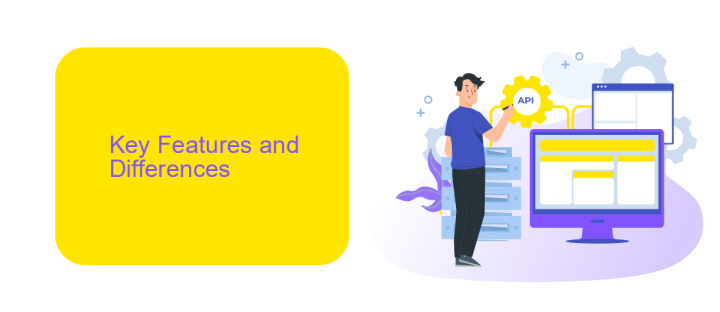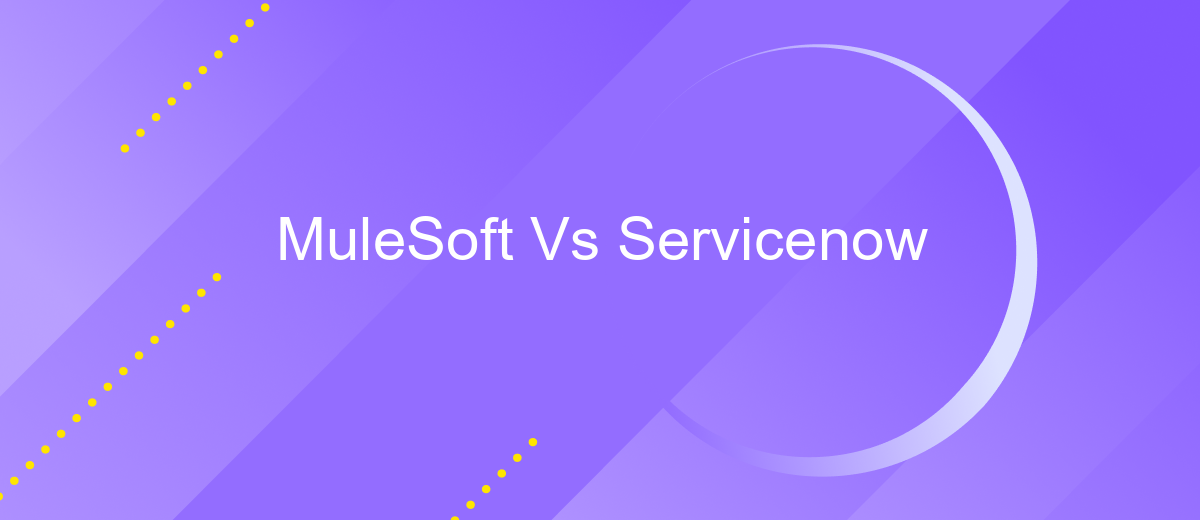MuleSoft Vs Servicenow
In the rapidly evolving landscape of enterprise technology, MuleSoft and ServiceNow have emerged as pivotal platforms driving digital transformation. MuleSoft excels in API-led connectivity, enabling seamless integration across diverse systems, while ServiceNow streamlines IT service management and business workflows. This article delves into the core functionalities, strengths, and use cases of both platforms, helping organizations make informed decisions tailored to their specific needs.
Introduction
In today's rapidly evolving technological landscape, businesses are constantly seeking efficient ways to streamline their operations and improve productivity. Two prominent platforms that have gained significant attention in this realm are MuleSoft and ServiceNow. Both offer robust solutions for integration and workflow automation, but they cater to different needs and use cases.
- MuleSoft: Specializes in connecting applications, data, and devices with its Anypoint Platform, providing comprehensive integration capabilities.
- ServiceNow: Focuses on digital workflows and IT service management, helping organizations automate and optimize their processes.
Understanding the distinct features and advantages of MuleSoft and ServiceNow is crucial for businesses aiming to choose the right platform for their specific requirements. Additionally, services like ApiX-Drive can further enhance these platforms by offering seamless integration solutions, ensuring that businesses can maximize their efficiency and achieve their operational goals.
Key Features and Differences

MuleSoft and ServiceNow are both powerful platforms, but they serve different purposes and cater to varied business needs. MuleSoft is primarily an integration platform that allows businesses to connect applications, data, and devices with its Anypoint Platform. It excels in API management, data integration, and creating seamless workflows between disparate systems. On the other hand, ServiceNow focuses on IT service management (ITSM) and automating business processes. It provides robust solutions for incident management, change management, and workflow automation, making it ideal for IT operations and service delivery.
One of the key differences is in their approach to integration. MuleSoft offers extensive tools for API-led connectivity, allowing for complex integrations through its API design and management capabilities. ServiceNow, while also offering integration features, is more centered on enhancing IT service workflows and operational efficiency. For businesses looking to streamline integrations without extensive coding, tools like ApiX-Drive can be beneficial. ApiX-Drive simplifies the process of connecting various applications and services, making it easier for organizations to automate workflows without deep technical expertise. This makes ApiX-Drive a valuable addition to both MuleSoft and ServiceNow ecosystems, depending on the specific integration needs.
Pricing and Licensing

When comparing MuleSoft and ServiceNow in terms of pricing and licensing, it's important to understand the distinct models they use. MuleSoft typically offers a subscription-based pricing model, which includes various tiers based on the number of integrations and API calls. ServiceNow, on the other hand, employs a user-based licensing model, where pricing is determined by the number of users and the specific modules they need.
- MuleSoft: Subscription-based, tiered pricing based on integrations and API calls.
- ServiceNow: User-based licensing, pricing varies by module and user count.
- Optional Integration Services: Tools like ApiX-Drive can be used to streamline integration processes, potentially reducing costs and complexity.
Both MuleSoft and ServiceNow offer scalable solutions, but the choice between them may depend on your organization's specific needs and budget. While MuleSoft is ideal for extensive API management and integration tasks, ServiceNow excels in IT service management with a focus on user-based scalability. Additionally, leveraging integration services like ApiX-Drive can further enhance your system's efficiency and cost-effectiveness.
Use Cases and Examples

MuleSoft is widely used for integrating various applications, data sources, and APIs, making it an ideal choice for businesses seeking seamless data flow across systems. ServiceNow, on the other hand, excels in IT service management, offering robust solutions for incident, problem, and change management.
Organizations often leverage MuleSoft to connect CRM systems like Salesforce with ERP systems such as SAP, enabling real-time data synchronization. ServiceNow is frequently utilized to automate IT workflows, ensuring efficient incident resolution and service request management.
- MuleSoft: Integrating e-commerce platforms with inventory management systems for real-time stock updates.
- ServiceNow: Automating incident management workflows to reduce resolution times and enhance customer satisfaction.
- MuleSoft: Connecting marketing automation tools with customer data platforms for personalized campaigns.
- ServiceNow: Managing IT assets and ensuring compliance through automated tracking and reporting.
For businesses looking to simplify integrations without extensive coding, ApiX-Drive offers a user-friendly platform to connect various applications effortlessly. By using ApiX-Drive, companies can streamline their workflows and enhance productivity, complementing the capabilities of both MuleSoft and ServiceNow.
Conclusion
In conclusion, both MuleSoft and ServiceNow offer robust solutions for integration and automation, catering to different organizational needs. MuleSoft excels in providing a comprehensive integration platform with extensive API management capabilities, making it ideal for complex and large-scale integrations. On the other hand, ServiceNow shines in its ability to streamline IT service management and automate workflows, making it a strong choice for organizations looking to enhance their operational efficiency.
Choosing between MuleSoft and ServiceNow ultimately depends on your specific requirements and existing infrastructure. For businesses looking for a versatile integration platform, MuleSoft is a solid choice. Meanwhile, ServiceNow is perfect for those aiming to optimize their IT operations. Additionally, leveraging tools like ApiX-Drive can further simplify the integration process by offering a user-friendly interface and pre-built connectors, ensuring seamless data flow between various systems. Therefore, understanding your business goals and integration needs is crucial in making the right decision.
- Automate the work of an online store or landing
- Empower through integration
- Don't spend money on programmers and integrators
- Save time by automating routine tasks
FAQ
What are the primary differences between MuleSoft and ServiceNow?
Can MuleSoft and ServiceNow be used together?
Which platform is better for IT service management?
How do I decide which platform to use for my business needs?
Are there services available to help implement and integrate these platforms?
Apix-Drive will help optimize business processes, save you from a lot of routine tasks and unnecessary costs for automation, attracting additional specialists. Try setting up a free test connection with ApiX-Drive and see for yourself. Now you have to think about where to invest the freed time and money!


